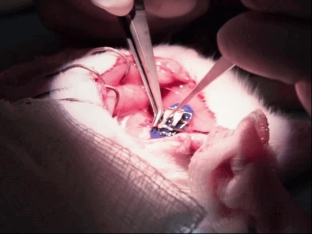Microvascular surgery belongs to the category of the most complex surgical interventions. Working with vessels involves performing incredibly complex manipulations and ultra-precise surgical techniques. This branch of surgery includes the performance of surgical interventions on blood vessels, the diameter of which does not exceed only a few millimeters. In plastic surgery, microvascular technique is used for engraftment of fingers, and also makes it possible to transplant a variety of blood-supplied autografts into almost any area of the human body.
Microvascular surgery: why it is important to remember the main principles
Surgical interventions in microvascular surgery are not possible for every operating plastic surgeon. The doctor must have the necessary knowledge in this area, important skills, as well as sufficient experience to perform such technically complex operations. An important role is played directly by the preparation for such interventions.
The operating surgeon must strictly follow the basic principles of microvascular surgery, have the skills to tie sutures on the vessels, and also understand how the vessels must be prepared for the operation in order for it to be successful.
Microvascular Surgery:
- The most important principles of microvascular surgery;
- preparation of vessels – important stage of surgical intervention;
- Peculiarities of tying sutures in microvascular surgery.
The most important principles of microvascular surgery
Among the many principles of microvascular surgery, the following are the most important:
- the course of the sutures to the intima of the vessels from the adventitia must always be vertical;
- when working with the vessel, it should be grasped only by the adventitia and avoid any manipulations with the intima of the vessel;
- important to avoid too many stitches;
- do not allow the needle to rotate in the vessel wall;
- anastomosis should be performed before reperfusion;
- if there are small defects in the vessel wall with pulsating bleeding, additional sutures should be applied;
- after reperfusion, it is necessary to irrigate the anastomosis area with warm saline and papaverine solution to stop the spasm and expand the vessel.
Preparation of vessels – important stage of surgical intervention
Preparation of vessels is an important step in any surgical intervention in microvascular surgery. First of all, it is necessary to carefully examine the lumen of the vessels, remove their damaged ends and rinse with saline with the addition of heparin to remove fibrin filaments and blood cells.
Surgery on normal intact vessels is one of the most important principles of microvascular surgery.
Only vessels with intact intima can be sutured, which can be achieved by excising the ends of the vessels to areas with no visible damage. If this condition is not met – significantly increases the risk of thrombosis.

Peculiarities of tying sutures in microvascular surgery
Proper vascular suture technique is very important in microvascular surgery, especially when dealing with very small vessels. Tightly stretched sutures can provoke tears in the vessel wall, which stimulates the reaction of platelets and thrombosis. To avoid this, it is necessary to leave a small "suture ring" that can be seen through the translucent artery. The diameter of such a ring should be approximately the same as the thickness of the arterial wall. The presence of a "suture ring" when sutured, indicates that the occluded portion of the artery has not been compressed.







Add a comment